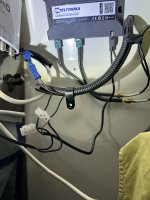USB-C connection
- Thread starter guerdeval
- Start date
Users who viewed this discussion (Total:89)
Robmac,
2cv,
st3v3,
NSY,
Fazerloz,
number14,
Tapfitter,
Alberto,
Budgie,
ajb70,
Nabsim,
Fisherman,
chrishunter,
RichardHelen262,
saxonborg,
edina,
Pudsey Bear,
mark61,
Val54,
AllanD,
colinm,
maingate,
merl,
Jo001,
Geek,
Topmast,
Pauljenny,
jann,
AdriaTwin,
oppy,
ProDave,
ricc,
r4dent,
TeamRienza,
TJBi,
marchie,
mikemfg,
kevlakes,
YeoBlade,
wildebus,
Wully,
Obanboy666,
Tezza33,
Bigshug,
bazzybabes,
clarkpeacock,
Wooie1958,
gypo,
thebeeman,
Bilw,
Doigy,
Bear,
Scotia,
SCRUMPY BOY,
Heppy,
Handel10,
Livotlout,
Winterskp,
DorsetBelle,
molly 2,
Rumour,
Motoroamer,
mikejay,
Monkeybrand,
korky,
Canalsman,
Moped,
Mick H,
DTF,
alwaysared,
Chip,
MikeRS,
Phantom,
iampatman,
myvanwy,
5andy,
adriandp,
Wildrock,
rambrose,
Technispark,
Stumeese,
Bouydog,
Slowho,
Zoli,
chrisvs57,
Harrers,
Morphology,
TonyandJo,
WingNut,

